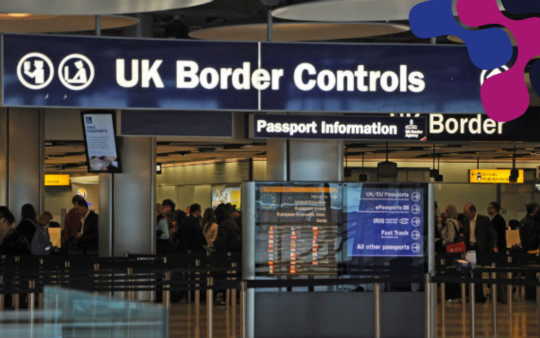5 Steps To Check Your Job Applicant’s Right To Work In The UK
As a small business, deciding to employ someone is a huge step and huge responsibility, and as we all know from Spiderman’s Uncle Ben:
“With great power, comes great responsibility!”
Ensuring you have the documents to prove your employees have the right to work in the UK can seem overwhelming, but there are some simple steps. My five-step plan will ensure you are protecting your reputation, your bank balance, and help you avoid a custodial sentence! It is up to an employer to establish what is known as an ‘Excuse’ this can either be ongoing or needs to be reviewed every 12 months and you and do that by doing the following:
Ask For Relevant Right To Work Documentation For All Your Employees
Relevant right to work documentation would usually be a passport. Driving licenses are not a recognised document to check for eligibility. However, if someone doesn’t have a passport, there is a list of what two other forms of ID are acceptable. That said, there are some things to watch out for; you need a full long birth certificate, not a short one. In some instances of spousal visa’s, you’ll be required to establish that the spouse is actually living with the holder of the visa.
Ensure you check:
- It is an original document
- Photograph: does the picture look like the person you are employing?
- Expiry dates – are they still in date?
- Date of birth – is it the same as on your starter paperwork?
- Names and signatures
- Endorsements and stamps (where applicable)
Ensure You Take Photocopies
- Photocopy the passport’s front page and all parts that show personal details relating to a potential employee
- Any appropriate page containing government stamps/endorsements that permit the type of work in question
Signature
Make sure you sign the photocopy and date it to indicate you have seen the original documents. Then store your copy in a safe place.
Retain and Review
Ensure that you have a copy of the documents on each personnel file – which, of course, can be electronic. If you have any visas or work permits, it is always best to keep those on file. In a separate file, keep a log as you will need to review the original right to work documents every 12 months to ensure they are still current.
At the time of writing, anyone within the EU may come and work in the UK freely, but with Brexit looming, there may be changes coming. At the moment, this is what is required by law for anyone that you employ.
Remember – these checks should be conducted on all applicants. You will be covered so long as you have secured the correct documentation to prove an employee’s right to work by their first day of employment.
If you would like any further advice on right to work documentation or other Human Resources issues, I offer an HR Health Check. As part of this free service, I can check to make sure you have everything you need in place.
Alternatively, if you want some ongoing support, why not check out my service plans. You can choose the plan that suits you. In addition to providing peace of mind, you’ll know in advance that you won’t receive an unexpected bill at the end of the month.
If you want to read more about which right to work documents are acceptable, please go to www.gov.uk.
Right! To Work it is for me, then… thanks so much for reading, and see you next time!
Don’t keep it a secret
Did you find this blog useful? Think you have fellow business owners that would too? Feel free to share or ‘like’ using social media buttons to the left.
Sign up to my blog
Did you enjoy reading this blog? if so please sign up so you can receive them directly to your inbox each week … keep your FOMO in check.
